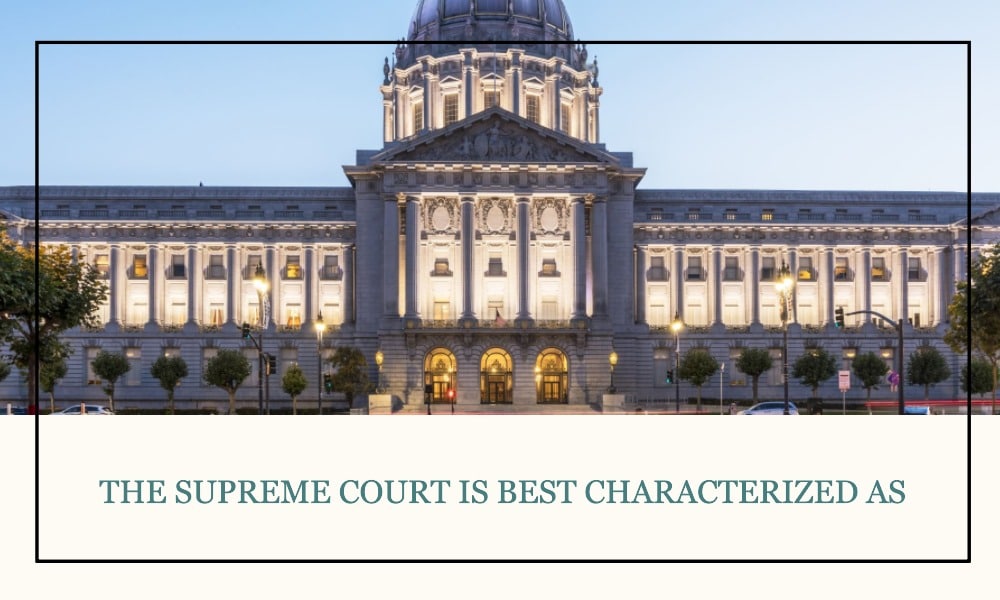Introduction:
The Supreme Court holds a unique and pivotal position in the legal and political landscape of the United States. As the highest court in the federal judiciary, it has the final say on matters of constitutional law, federal law, and disputes between states or between the U.S. and other countries. When characterizing the Supreme Court, various aspects must be taken into account, including its role, powers, and functions. This article aims to explore these facets to best characterize the Supreme Court.
The Guardian of the Constitution:
One of the most prominent characterizations of the Supreme Court is that of the guardian of the Constitution. Through judicial review, the Court has the authority to invalidate laws and executive actions that it deems unconstitutional. This power, first established in Marbury v. Madison (1803), plays a vital role in ensuring that the government operates within the constraints of the Constitution.
A Non-Political Judicial Body:
In theory, the Supreme Court is characterized as a non-political judicial body. Unlike the executive and legislative branches, the Court’s primary function is not to create policy but to interpret the law. Justices are appointed for life (unless they choose to retire or are impeached) to insulate them from political pressures. However, the appointment process is highly political, and many argue that justices’ ideologies can influence their decisions.
An Arbiter of National Issues:
The Supreme Court often acts as an arbiter of national issues. When legal questions arise that have broad implications for American society, such as civil rights, abortion, or the scope of presidential power, the Court is often called upon to provide definitive rulings. Its decisions have far-reaching effects and shape the legal and social landscape of the nation.
A Balancer of Powers:
The Supreme Court can also be characterized as a balancer of powers within the federal government. Through checks and balances, the Court ensures that neither the executive nor the legislative branch becomes too powerful. For instance, it can declare an act of Congress unconstitutional or limit the actions of the President if they overstep their authority.
A Final Appellate Court:
As the highest court in the land, the Supreme Court is the final appellate court. Cases that have been appealed through the lower federal courts or state supreme courts can be taken to the Supreme Court. However, the Court has discretionary jurisdiction, meaning it chooses which cases it will hear, usually selecting those that present significant constitutional questions or legal issues of national importance.
An Evolving Institution:
Finally, the Supreme Court is characterized as an evolving institution. While the Constitution established the Court, its role and powers have evolved over time through legal interpretation and historical events. The Court’s decisions often reflect, and sometimes lead, changes in social attitudes and values.
Conclusion:
The Supreme Court is best characterized as a multifaceted institution. It is the guardian of the Constitution, a non-political judicial body, an arbiter of national issues, a balancer of powers, a final appellate court, and an evolving institution. Its decisions have profound impacts on the legal framework and social fabric of the United States. Understanding the Supreme Court’s characterizations is crucial for comprehending its role in American governance and society.

